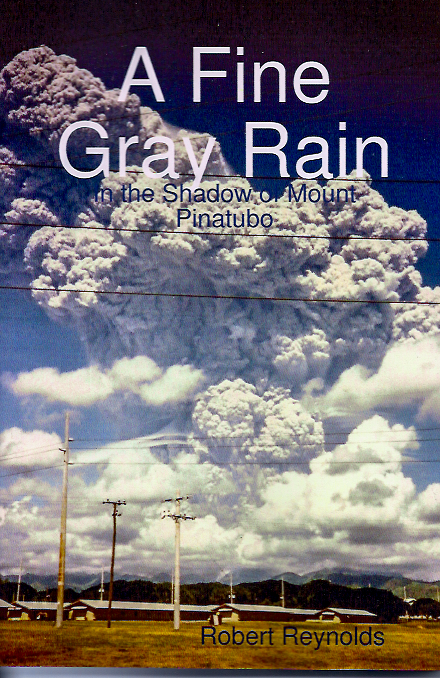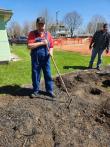A quarter century ago, Mount Pinatubo erupted in the Philippines. It was the second largest volcanic eruption of the 20th century and the largest in a populated area. It would devastate major American military bases and force their permanent closure.
This is a personal account by the author of life in the Philippines leading up to and during that catastrophic natural event.
After 550 years of dormancy, Mount Pinatubo awoke. A small venting of steam from the nearby mountain seemed no cause for concern when it first appeared. However, over the course of weeks the vent became larger and seismic activity increased. Scientists arrived at the giant American Air
Base to begin monitoring the activity and military officials began planning in case an eruption appeared imminent.
In June 1991, more than 15,000 military, civilian and dependents, including the author’s family, were evacuated to Subic Bay Navy Base several miles away. A 1,000-person force remained to watch over the air base.
Three days later the first of several large eruptions occurred, but resulted in little damage as ash shot more than 60,000 ft. into the sky, but settled back onto the mountains. By the end of the week, however, the mountain suffered its most damaging eruption and chased the remaining personnel from the base. The mission essential force retreated to a local college, ironically at the base of an extinct volcano!
This colossal eruption continued for several hours shooting ash, poisonous gases, and volcanic debris miles into the sky. At the same time, a major typhoon blew in off the ocean and earthquakes repeatedly rattled the area. The thick, wet ash rained down turning day into night as it blocked the sun.
The heavy typhoon rains caused major flooding as ash-mud slurries raced down local riverbeds and low-lying areas, washing away bridges and homes and burying the base in several inches to several feet of cement-like ash. The rain-laden ash caused hundreds of buildings, warehouses, and aircraft hangars to collapse, including the building housing the author’s office.
In the meantime, typhoon winds blew ash and rain toward the Navy base, causing similar devastation as the evacuee’s safe haven itself came under the mountain’s onslaught.
Two days later, after the mountain quieted, a small contingent of personnel returned to Clark to survey the damage and begin cleanup and salvage operations.
The returning party came back to find a surreal, monochromatic landscape of devoid of color other than that of the gray volcanic ash. As they approached the flight line, aircraft hangars lay in shambles, warehouses lay flattened, roofs caved in, base grounds and vehicles buried in ash.
Military officials decided to permanently evacuate all non-essential personnel from both the Air Force and Navy bases. Along with thousands of others, the author’s family would be evacuated from Subic Bay via aircraft carrier and other Navy ships that were rushed to the area. The author himself remained at Clark to help conduct salvage operations before the devastated bases were relinquished to the Philippine Government.
A FINE GRAY RAIN is Robert Reynolds’ firsthand account of one of nature’s biggest and most destructive events of the 20th century.
Lulu Publishing: Glossy finish paperback, 187 pages, 8.5" X 10.5" This book can be ordered from www.lulu.publishing Select Photographs included.





